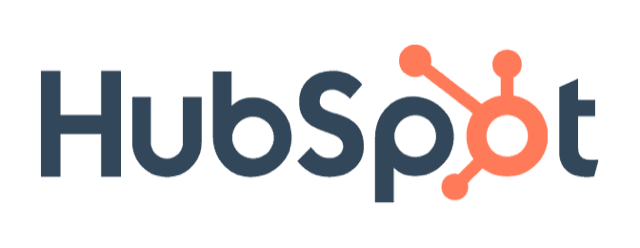MENU
Starting a Business
- Best Small Business Loans
- Best Business Internet Service
- Best Online Payroll Service
- Best Business Phone Systems
Our Top Picks
- OnPay Payroll Review
- ADP Payroll Review
- Ooma Office Review
- RingCentral Review
Our In-Depth Reviews
Finance
- Best Accounting Software
- Best Merchant Services Providers
- Best Credit Card Processors
- Best Mobile Credit Card Processors
Our Top Picks
- Clover Review
- Merchant One Review
- QuickBooks Online Review
- Xero Accounting Review
Our In-Depth Reviews
- Accounting
- Finances
- Financial Solutions
- Funding
Explore More
Human Resources
- Best Human Resources Outsourcing Services
- Best Time and Attendance Software
- Best PEO Services
- Best Business Employee Retirement Plans
Our Top Picks
- Bambee Review
- Rippling HR Software Review
- TriNet Review
- Gusto Payroll Review
Our In-Depth Reviews
- Employees
- HR Solutions
- Hiring
- Managing
Explore More
Marketing and Sales
- Best Text Message Marketing Services
- Best CRM Software
- Best Email Marketing Services
- Best Website Builders
Our Top Picks
- Textedly Review
- Salesforce Review
- EZ Texting Review
- Textline Review
Our In-Depth Reviews
Technology
- Best GPS Fleet Management Software
- Best POS Systems
- Best Employee Monitoring Software
- Best Document Management Software
Our Top Picks
- Verizon Connect Fleet GPS Review
- Zoom Review
- Samsara Review
- Zoho CRM Review
Our In-Depth Reviews
Business Basics
- 4 Simple Steps to Valuing Your Small Business
- How to Write a Business Growth Plan
- 12 Business Skills You Need to Master
- How to Start a One-Person Business
Our Top Picks
How To Create and Write Your Business’s First E-Book
Table of Contents
If you are looking to reach your marketing objectives and improve your relationships with customers, consider creating an e-book. An e-book, or electronic book, is an online piece of content that goes in-depth about a specific topic and is exclusively digital. When crafted with your audience in mind, it’s a surefire way to garner a following and show readers your brand is worth investing in.
How to create your first e-book
Research your target market.
How well do you know your audience? If the answer is not so well, it’s time to research your target market so you can create content suited to their needs. It’s important to gather ample information on your audience so every part of your e-book is relevant to their interests. If you write about a topic that doesn’t matter to your readers, your e-book won’t sell many copies and you won’t reach your objectives.
When researching your target audience, it’s crucial to create customer personas that give you the necessary information about your readers. These buyer profiles will help you create an e-book that collects email addresses and builds a loyal following. Include details like demographics, purchasing behaviors, income, education, pain points and more. Every piece of information helps to create an e-book that caters to your customers.
Social media helps connect with your target audience. Search relevant, industry-related hashtags and create a list of phrases and questions users have. If they overlap, you’ll know those topics are popular and need extra attention. [Follow this step-by-step guide to social media marketing to help your business grow.]
Pick a relevant topic.
There are likely multiple things your audience wants to learn more about, but your e-book needs to focus on just one topic. Why? Because they’re short-form pieces of content, and the more you focus on one subject, the more in-depth information you’ll be able to provide.
It isn’t difficult to pick a topic relevant to your audience once you’ve done your research. Half the struggle is figuring out your market’s pain points and interests so you can create content tailored to their needs. Once you have that, you’re set to choose the right topic for your e-book.
Ask yourself the following:
- What do I want readers to learn from this?
- How can I help them accomplish this goal?
When you keep your goals in mind, it’s easier to come up with ideas to write about.
Research popular keywords your audience uses in search terms. If you notice that specific phrases pop up more than once, you’ve found a topic worth exploring in detail.
In addition to conducting keyword research, feel free to reach out to your audience and ask what they’d like to learn more about. If they’re already on your email list, they’re more likely to respond because they’re already familiar with your brand and its content. If not, set up a survey or form on your website asking users what they would like to see next. [Learn about the many ways you can build an online presence.]
When choosing a relevant topic for your e-book, ask yourself two questions: What do I want readers to learn from this, and how can I help them accomplish their business goals?
Create an outline.
Before you dive in headfirst, create a framework for your e-book that details each chapter and how you’ll provide information under each subtopic. Without an outline, you’re writing without preparation and might end up wasting valuable time.
Planning saves you time, money and resources, because you’ll know what you need to focus on before you begin. It also gives you a clear look at the e-book as a whole so you refrain from repetition and providing irrelevant information.
Brainstorming is essential for your outlining process. Jot down the main points you want to cover. From there, add subtopics to each point until you have enough to form chapters. It doesn’t matter how messy the process is, as long as you get it down on paper.
Once you create each chapter, make a note of what it will entail. For example, if you’re creating an e-book about how to find remote work as a freelance writer, you might note in one of your book’s early chapters that you need to cover a list of all the job boards. In another chapter, you might leave yourself a note to include a list that covers all the signs of a quality job post. This way, you tell yourself what you’re going to write about for that chapter, so the e-book easier to piece together once you start.
When outlining your e-book, spend time brainstorming ideas to help you with the process.
Write your e-book.
Once you’ve got an outline that makes sense and provides structure, now comes the fun part: writing.
There are four components you need to focus on:
- Title
- Chapter titles
- Body copy
- Conclusion
Separate your main points into heads and subheads within chapters so it’s easily skimmable. People don’t want to read walls of text that are difficult to scan. Make it easy for your readers by removing this obstacle. Break down your main points into several paragraphs, and use bullet points to list information if needed.
Keep your branding in mind while writing. Your tone, voice and language should match your brand effortlessly so readers know your writing comes from you. Write with a conversational tone so the e-book is easy to understand. Avoid clumsy, wordy sentences, and use editing software like Grammarly to refine your e-book and create the best version possible.
Design your e-book.
If you aren’t a designer or if you’re unfamiliar with how to make your e-book visually appealing, hire someone to do it for you. You can write high-quality content that offers valuable insights, but if the look is ill-designed or doesn’t match your branding, few people will download it. Every element of your e-book needs to speak to its quality and the effort you put into it.
If you want to take the plunge and design your e-book yourself, more power to you. Keep these tips in mind:
- Create a visually appealing cover. The right cover adds value to your e-book and tells readers that turning the page will be worthwhile. An ill-designed title page is enough to send readers to the exit button.
- Add images. Content that includes images receives more views, breaks up walls of text, and gives readers something interesting to look at.
- Use legible fonts. The wrong font will have your readers exit out of the PDF so quickly it’ll be like they never downloaded it in the first place. Avoid illegible fonts that are too small or difficult to read at a glance.
- Choose a simple color scheme. You don’t want readers to be too distracted by your e-book’s color palette to pay attention to what it says. The main focus should be on the content itself and how useful it is to your audience rather than the technical aspects of its design.
If you are not a designer and have no experience in designing e-books, hire someone to do it for you. This will indicate to your potential audience that money and effort have gone into your e-book.
Distribute your e-book.
After the design aspect is complete, convert your e-book into a readable format, such as a PDF. This ensures no one will edit or tamper with it. It will also provide a smooth reading experience for your audience. All devices can read PDF files, and the e-book will appear the same to everyone regardless of what device they use to view it.
The best way to distribute your e-book is to use online retailers and publishing platforms that specialize in selling e-books. Below are some popular e-book publishing platforms:
- Kindle Direct Publishing
- B&N Press
- iTunes Connect
- Kobo Writing Life
- Google Play Books
Each publishing platform comes with its own features and advantages. Before choosing one, determine which will work best for your business’s e-book. You can also use e-book aggregators, which are companies that upload your book to various retailers on your behalf for a flat fee or for a portion of the royalties. Popular aggregators include Draft2Digital, Smashwords, PublishDrive, StreetLib and XinXii.
Today, there are three popular e-book distribution strategies: publishing only on Amazon and enrolling in KDP Select for additional benefits, uploading your e-book to multiple retailers yourself – which will guarantee you the royalties – or using an aggregator to upload your e-book, which will save time and energy. There are many other less common strategies as well. Review all options with your team before making your final decision about which method works best for you.
E-book distribution greatly depends on your efforts after publication. Once it’s been finalized, use marketing strategies to spread the word about your e-book. Marketing will lead potential customers to your business and demonstrate your brand’s credibility and industry knowledge. There are many different marketing strategies you could use to promote your e-book, such as social media posts, a specially designed email notification or a related email marketing campaign.
E-books are a helpful source of information for your audience and a valuable method to build a loyal following and generate leads for your business. It’s important to acknowledge the time, effort and resources it takes to create an e-book, but when you craft one with your audience in mind, it’s well worth your time.
The benefits of creating an e-book for your business
1. It improves lead generation.
Any lead magnet, whether it’s an e-book, checklist, template or other resource, is going to help your brand improve its lead generation. It’s easier to grow your email list and grab users’ attention when you offer them valuable information for free. That shows you want to teach your audience new things so they can succeed in their endeavors. Since lead generation is among businesses’ top three content marketing goals, e-books are a crucial part of a successful inbound marketing strategy.
2. An e-book boosts brand credibility.
It’s especially challenging for new businesses and websites to prove themselves when they don’t have a large following yet. Growing your brand and attracting the right audience takes time. However, when you provide readers with knowledge and encourage their learning, it boosts your brand’s credibility, positions you as an industry expert, and provides you with a solid reputation.
3. It builds brand loyalty.
If you’re going to profit off of your e-book, you need to garner loyal readers. It’s easier to turn them into paying customers once you have their attention, but you need to make sure you’re providing valuable information first. Quality content can drive traffic to your website, and that encourages users to become loyal to your brand.
4. An e-book generates sales.
Even if you aren’t selling your e-book for a price, providing it for free moves users down the sales funnel so they become more familiar with your brand and its content. Align your content with your audience’s buying journey so they feel ready to purchase. A healthy email list mixed with valuable lead magnets is a recipe for generating sales.
Additional reporting by Sean Peek.










